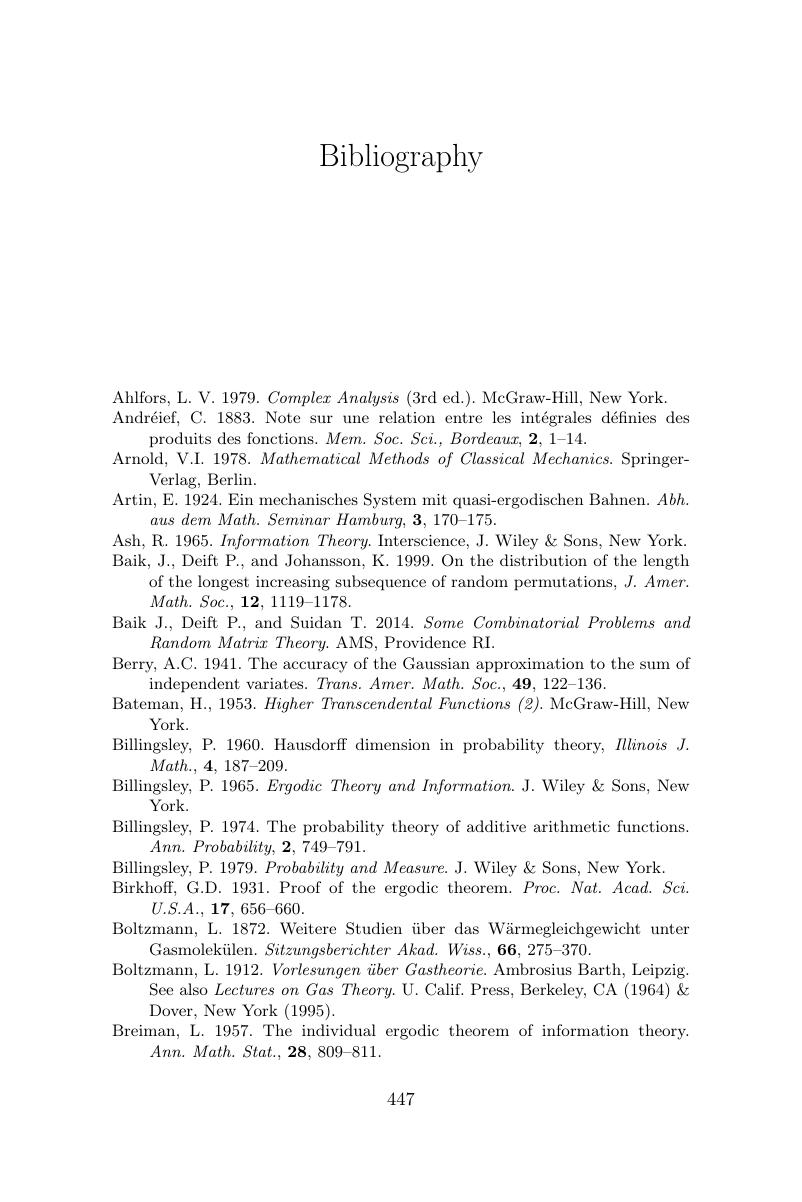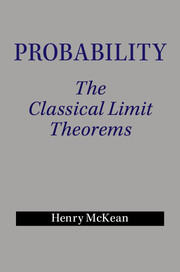Book contents
- Frontmatter
- Dedication
- Contents
- Preface
- Guide
- 1 Preliminaries
- 2 Bernoulli Trials
- 3 The Standard Random Walk
- 4 The Standard Random Walk in Higher Dimensions
- 5 LLN, CLT, Iterated Log, and Arcsine in General
- 6 Brownian Motion
- 7 Markov Chains
- 8 The Ergodic Theorem
- 9 Communication over a Noisy Channel
- 10 Equilibrium Statistical Mechanics
- 11 Statistical Mechanics Out of Equilibrium
- 12 Random Matrices
- References
- Index
- References
References
Published online by Cambridge University Press: 05 December 2014
- Frontmatter
- Dedication
- Contents
- Preface
- Guide
- 1 Preliminaries
- 2 Bernoulli Trials
- 3 The Standard Random Walk
- 4 The Standard Random Walk in Higher Dimensions
- 5 LLN, CLT, Iterated Log, and Arcsine in General
- 6 Brownian Motion
- 7 Markov Chains
- 8 The Ergodic Theorem
- 9 Communication over a Noisy Channel
- 10 Equilibrium Statistical Mechanics
- 11 Statistical Mechanics Out of Equilibrium
- 12 Random Matrices
- References
- Index
- References
Summary

- Type
- Chapter
- Information
- Probability , pp. 447 - 457Publisher: Cambridge University PressPrint publication year: 2014



